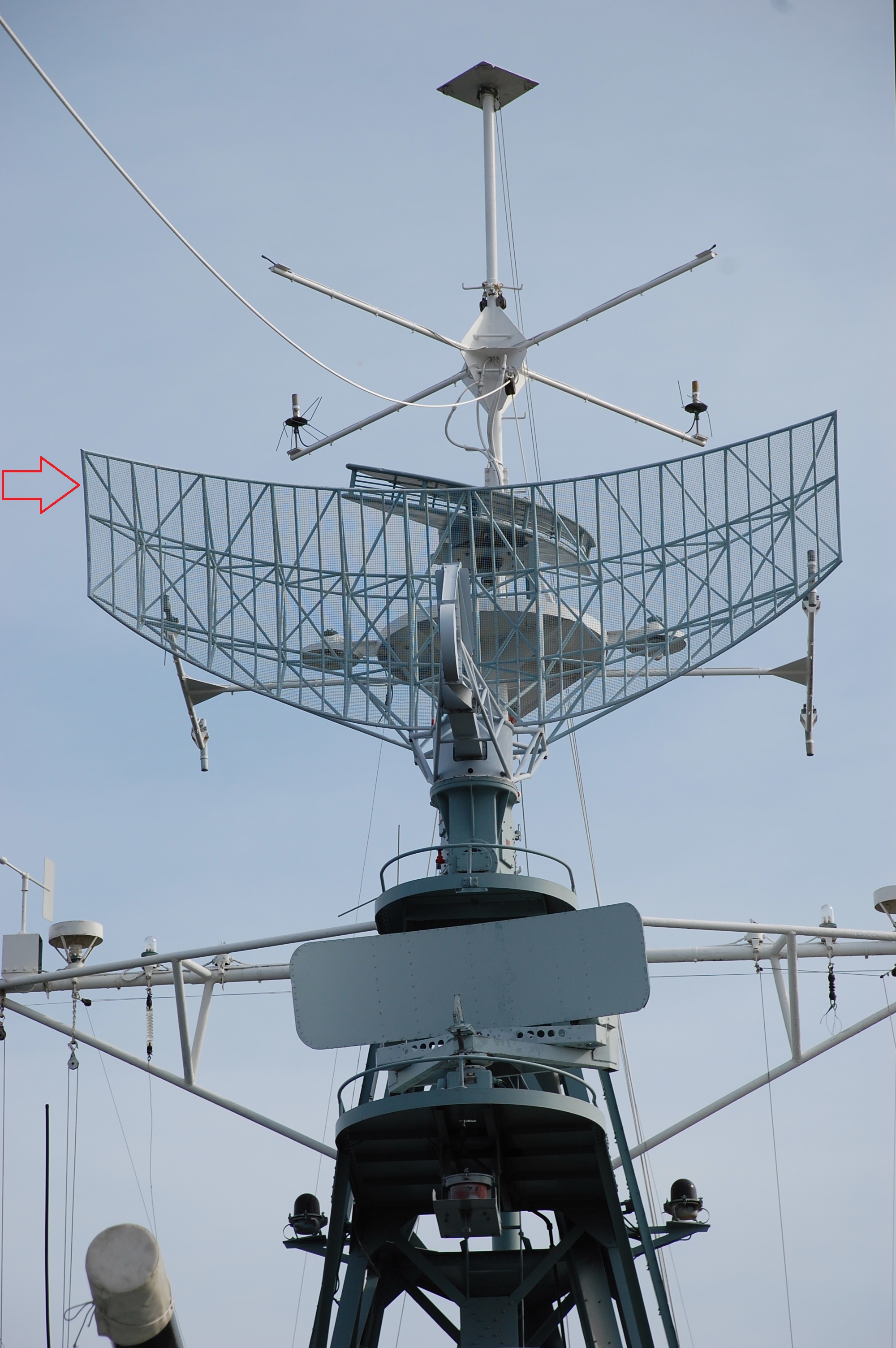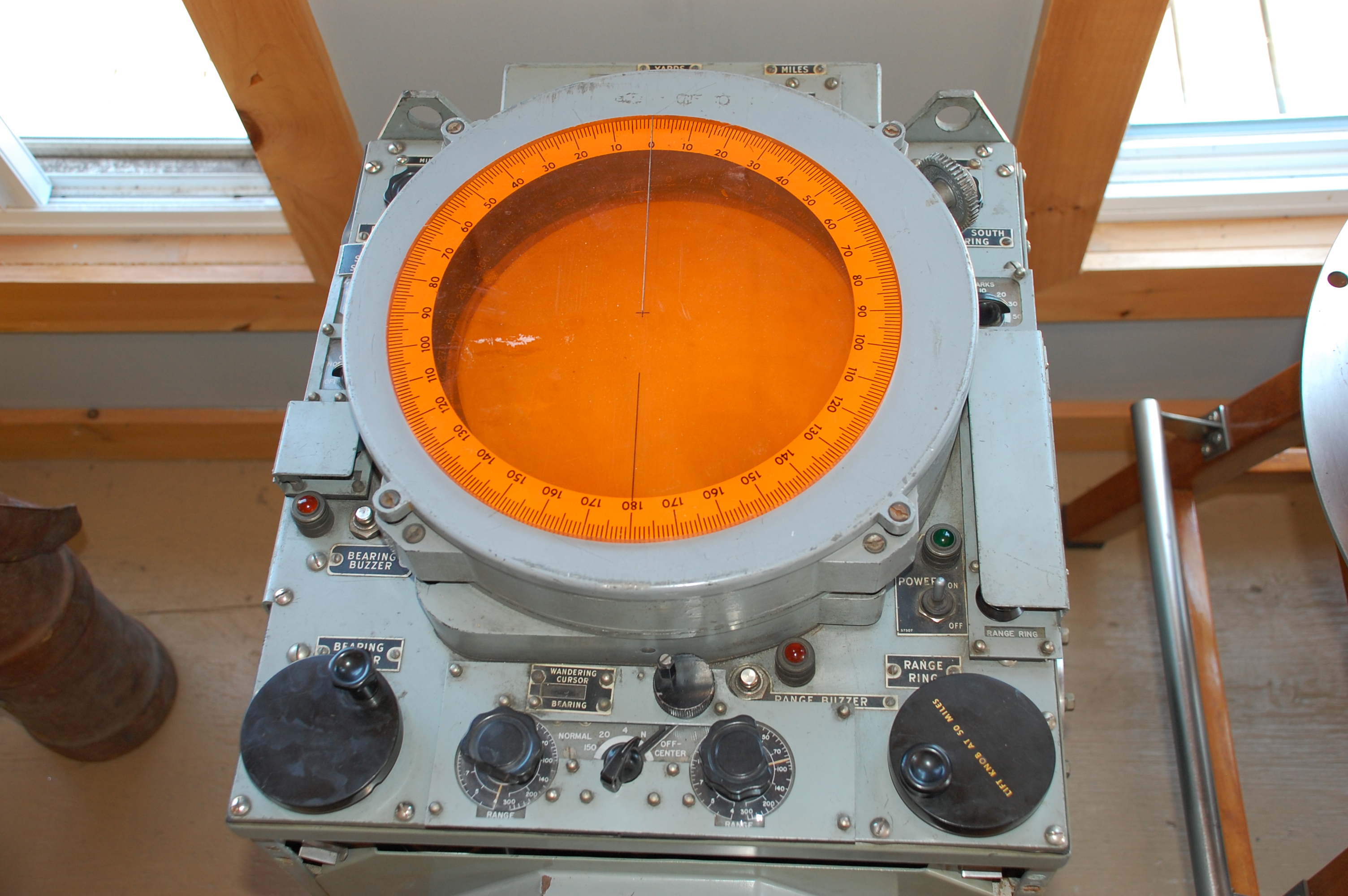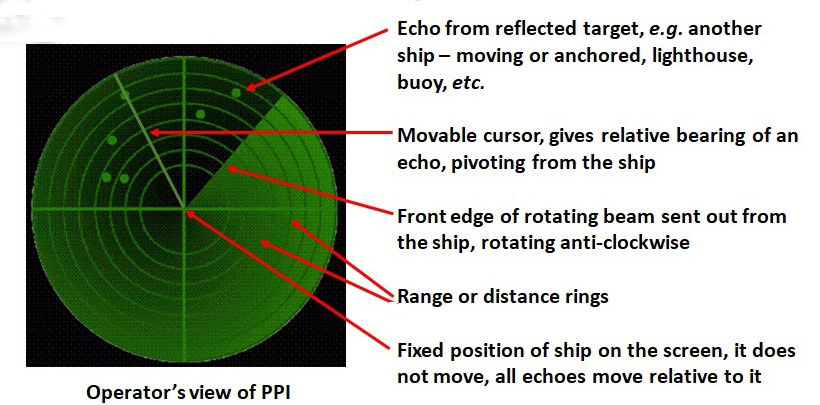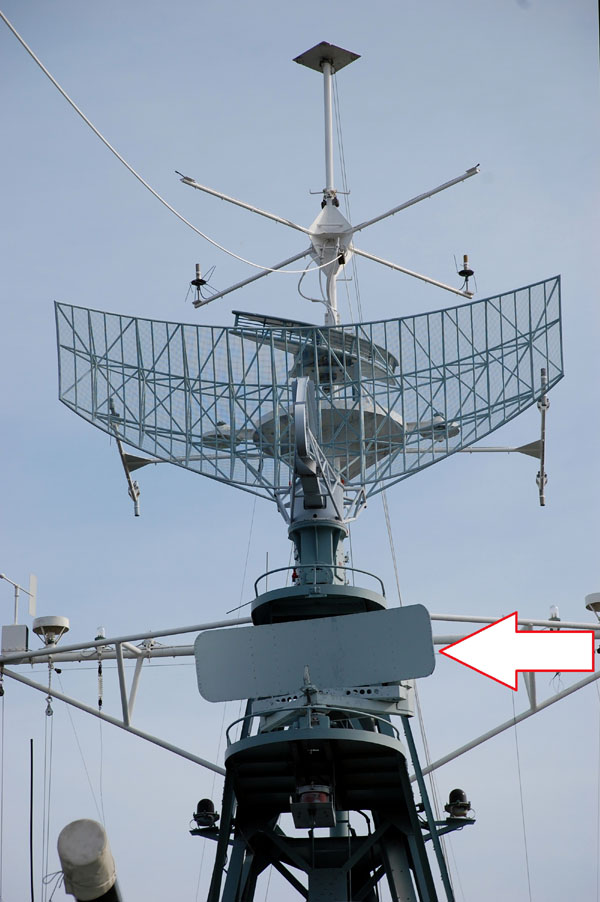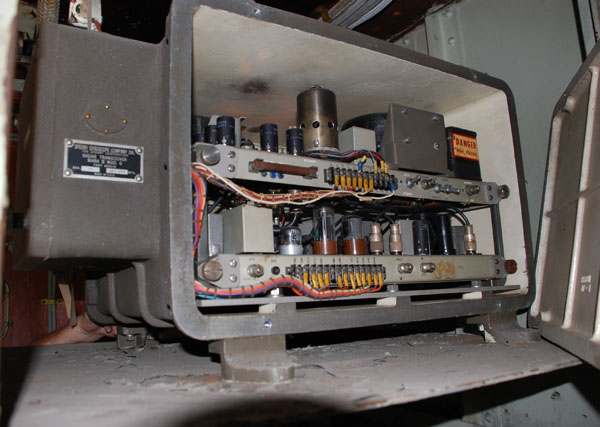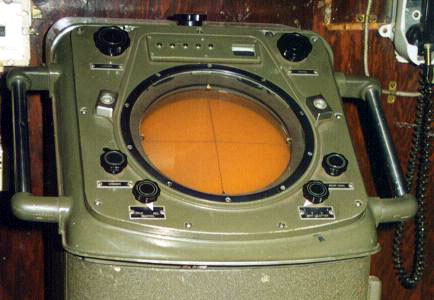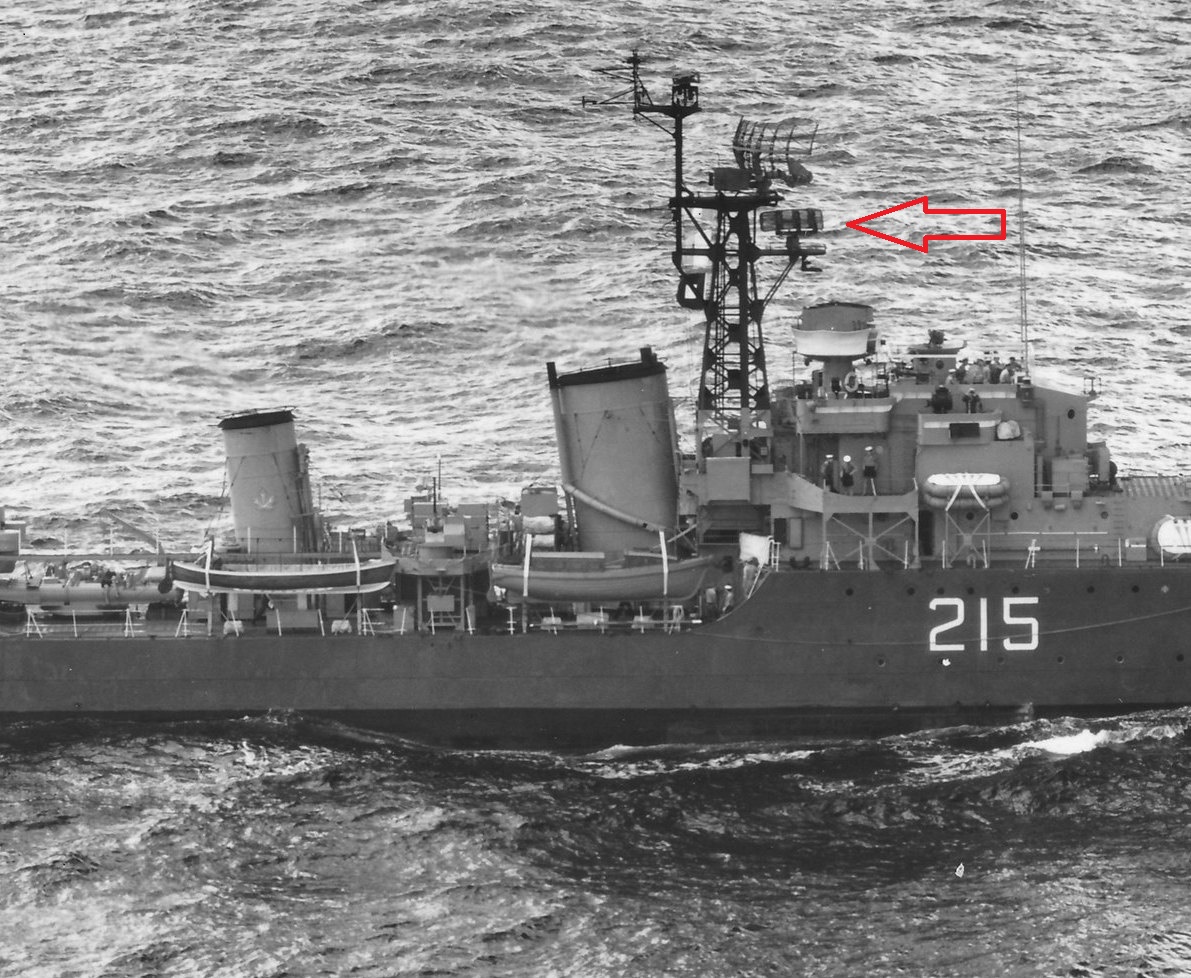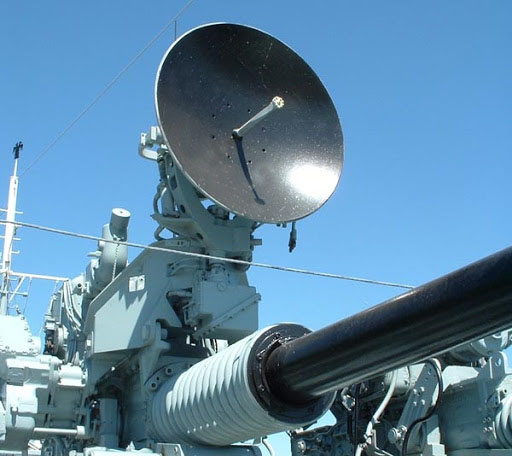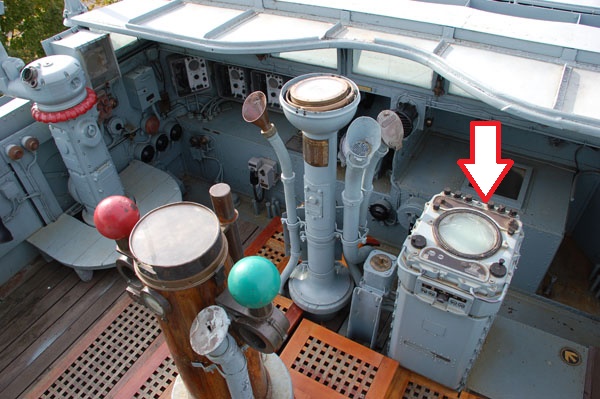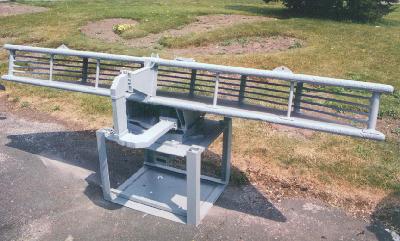| Situated on the topmost teardrop on the foremast is the 293 radar
antenna which spanned the period 1944 to the late 1950s.
This is an S-band target indicator radar sometimes referred
to as "Warning Combined" . "Combined" means that it could detect
both air and surface targets.
The RCN decommissioned the 293 radar system in the late 1950s. Because
HAIDA was lucky to have an example of this antenna, it was re-mounted in
its original spot on the foremast strictly as a historical display.
The control electronics for the 283 used to be housed in what is
now the Electronics Maintenance Room. |
